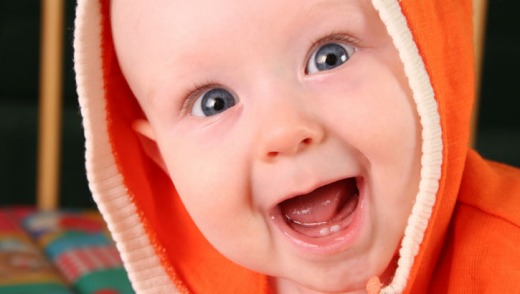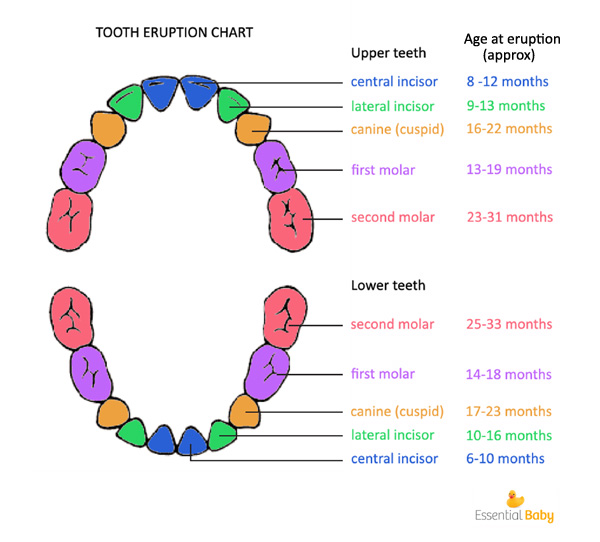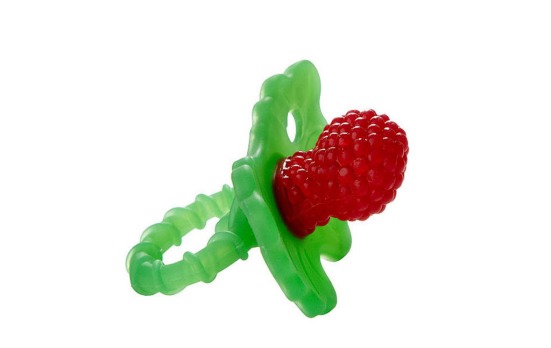Although baby teeth - also known as primary teeth - can arrive in any order, many children follow a loose pattern.
The process often starts with the middle bottom teeth, with the top two middle teeth the next to arrive. Next are the teeth beside those middle chompers, and then the teeth beside them, continuing on until the jaw is full of a set of 20 little pearly whites.
You can expect your child to start teething around six months, and it can take up to two and a half years for all the teeth to come through. But again, this is just a general guide - some children are born with one tooth (or more!), while others remain toothless until they're more than a year old.

The role these primary teeth play in your child's life is an important one. They're vital in terms of development - even for basic things such as chewing and speech development, and maintaining space in their mouths - so it's best to get into good dental hygiene habits with your child at a young age.
Of course, once your child has a full mouth of teeth, you've only got a few years before they start falling out to make way for their 32 permanent replacements. They can start falling out around age six, and will generally follow the same pattern in which they arrived, so the middle bottom teeth are usually first to go.
If you're ever worried about your child's development, see a doctor.
Check out our chart of approximate tooth eruption ages below.
























